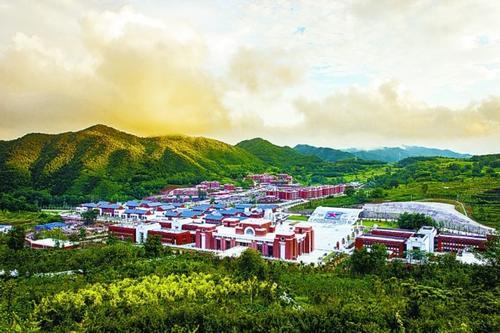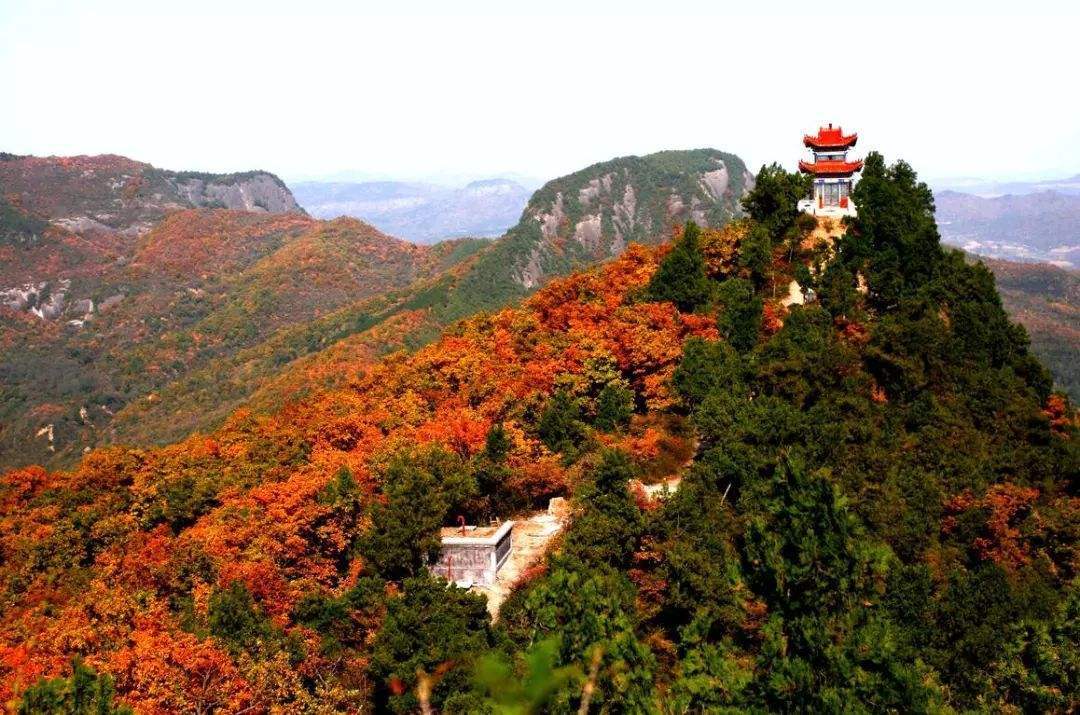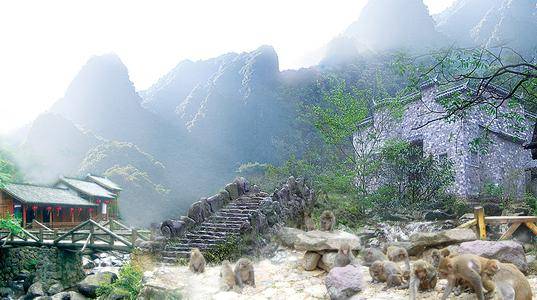Xiangshan
Xiangshan Peak is formed by the connection of three peaks: east, west, and middle. The three peaks are steep and arranged in a row, resembling a pen rack, hence it is also known as Sanshishan or Bijiashan. During the Qing Dynasty, it was renamed Xiangshan. Xiangshan Peak towers into the clouds, with ancient cypress trees forming a lush forest, and majestic, ancient temples. The three peaks are surrounded by mountains, creating a picturesque scene of overlapping greenery that is refreshing and delightful. Xiangshan is one of the eight major Buddhist holy sites in China, and it is said that Princess Miaoshan attained Buddhahood here (as Guanyin Bodhisattva). Halfway up the middle peak of Xiangshan, there is a natural stone cave known as Qifeng Cave or Xiangshan Main Cave, where the 'Thousand-Handed and Thousand-Eyed Bodhisattva' is worshipped, also known as Xiangshan Bodhisattva. According to the 'Great Xiangshan Chronicles', Xiangshan Temple was founded by Princess Miaoshan, the third daughter of King Miaoshan.
Xuejiazhai
Located in Zhaojin Town, Yao County, Shaanxi Province, the Xuejiazhai Revolutionary Site is situated at the southern end of Qiaoshan, with an altitude of over 1600 meters. This place features overlapping mountain ranges and dense forests like a sea. The central area has steep cliffs, making the terrain extremely rugged. It is said to be the military training ground of Xue Gang.
Zhaojin Danxia National Geopark
Address: Tianjiazui Village, Liulin Town, Yaozhou District, Tongchuan City, Shaanxi Province. Zhaojin Danxia National Geopark is located in the Weibei mountainous area of Shaanxi Province, in the heart of the Ordos Basin, covering a total area of 60.8 square kilometers. It features Danxia landforms in the southern transition zone, with numerous rocky peaks composed of Cretaceous Yijun conglomerate and Fenghuangshan conglomerate. The park is characterized by intersecting gullies and streams, undulating mountains, and majestic scenery, combining the 'Wonders of Mount Hua' and the 'Wonders of Mount Nan'. The park is divided into three areas: Xiufang Gully Park, Wangjia Gully Park, and Daxiang Mountain Park. It mainly includes the Danxia landform scenic areas of Jiulongzhai, Daxiang Mountain Park, and Wangjia Gully Park, the old revolutionary base area of Zhaojin Shaanxi-Gansu Border, and the Buddhist cultural scenic area of Xiangshan Temple.
Located in Mazui Village, Mazui European Style Town is situated between Weibei Plateau and Loess Plateau, about 14 kilometers north of Yaozhou City. It is adjacent to the water paradise—Jinyang Lake. The town is located on the sunny side of a hill at an altitude of 890 meters, east of the Jinyang Lake highway exit, with a superior geographical location and convenient transportation. Known for its 'European style' charm, Mazui Village has positioned itself as a 'fashionable and high-end' tourist destination with an innovative business model.
Yaowang Mountain
Yaowang Mountain is located about 1.5 kilometers east of Yaozhou District in Tongchuan City. It was called Panyu Mountain during the Tang Dynasty and Wutai Mountain after the Song Dynasty. The ancient cypress trees are lush, stone steles stand in great numbers, and the scenery is beautiful, with many historical sites to visit. Sun Simiao, a famous medical scientist in ancient China during the Sui and Tang Dynasties, spent his later years in seclusion here and was later called the 'Medicine King' by posterity, hence the name Yaowang Mountain. In ancient times, this place was the central site for people to commemorate Sun Simiao. Every year on the second day of the second lunar month, a temple fair is held, attracting visitors from all directions to show their respect and remembrance. Today, Yaowang Mountain still preserves buildings from the Jin and Yuan Dynasties and large murals from the Yuan Dynasty. The Ming Dynasty Yaowang Hall and the Prescription Stele are also available for tourists to view. There are more than fifty scenic spots, including the Taixuan Ancient Cave and the Medicine Washing Pool. The stone carvings of Yaowang Mountain span the entire mountain, with more than forty cliff carvings from the Sui and Tang Dynasties, which are exquisite. Among them, there are more than a hundred statues from the Northern Wei to Tang Dynasties, which are very precious. There are more than two hundred stone steles from various dynasties, all of which are physical archives of Yaowang Mountain's stone carvings. There are also stone pagodas, stone coffins, and stone archways for tourists to view.













